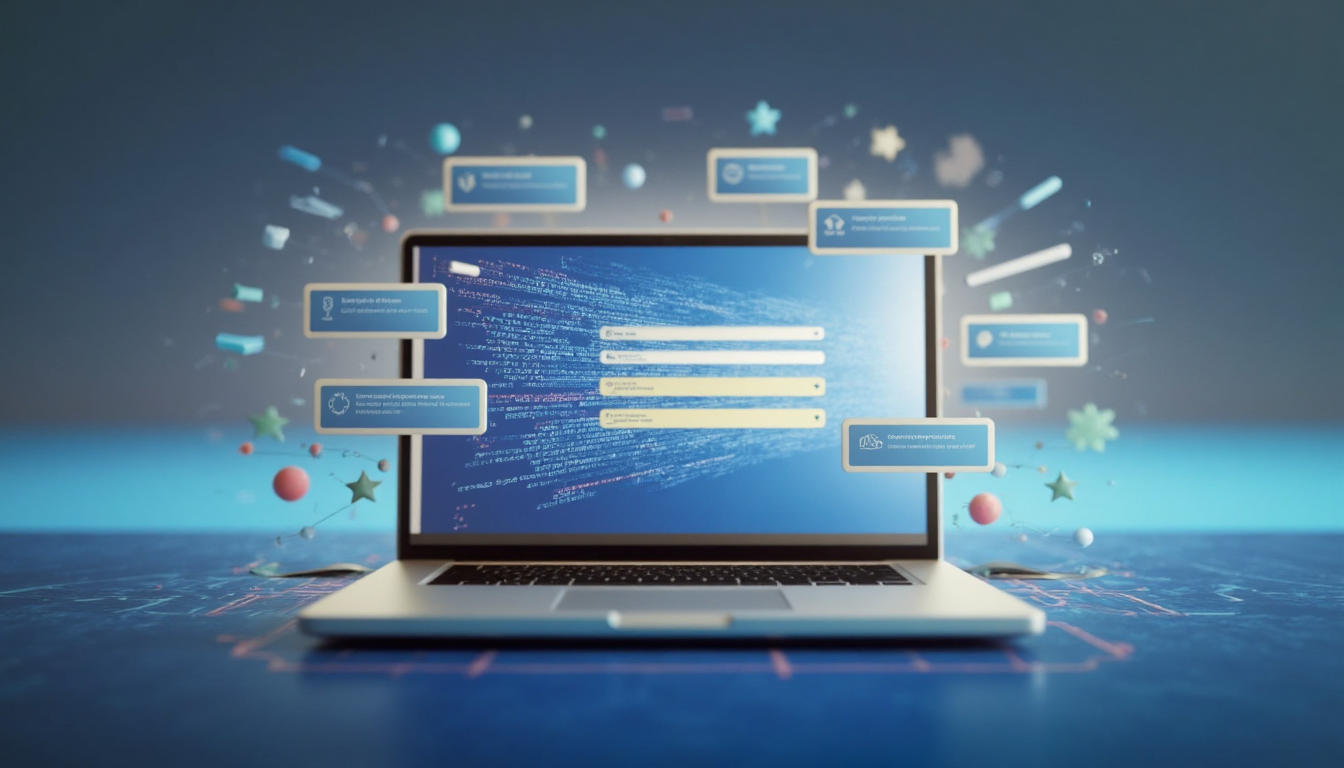Why Enterprise Threat Models Get Worse Over Time

Threat modeling is supposed to help you get ahead of risk. But somewhere between kickoff and scale-up, things go sideways. What started as a sharp, structured security activity turned into a slow, inconsistent mess. Models don’t match the systems they were built to protect. Teams copy-paste templates that no longer reflect reality. And what once helped drive security decisions now lives in a forgotten Confluence page.
This is a consistency problem. And if you’re leading AppSec at scale, you’ve likely seen it happen across product lines, engineering teams, and regions. One team follows STRIDE, another swear by checklists, and a third doesn’t even model at all. When threat modeling lacks repeatability and standardization, you lose the ability to measure or improve anything. And that introduces risk quietly but constantly.
Table of Contents
- Why Threat Models Break Down Over Time
- The Price You Pay When Threat Models Fall Apart
- Repeatability vs. Consistency
- How AI Makes Threat Modeling Consistent, Scalable, and Always Up to Date
- How AI Threat Modeling Fits Into Your Existing Workflow
- Bring Threat Modeling Back to Life
Why Threat Models Break Down Over Time
Threat modeling rarely fails at the start. You gather the right people, map out the system, identify risks, and maybe even prioritize mitigations. But fast-forward six months, and that same model is often stale, inconsistent, or missing altogether.
Here’s why this happens in most organizations:
Inconsistent approaches across teams
One team uses STRIDE in Lucidchart. Another builds custom threat checklists in Notion. A third hasn’t modeled anything in months. Without a standard framework or method, threat modeling becomes a siloed practice that varies wildly from team to team. You wouldn’t be able to compare models, measure risk consistently, or ensure coverage across products. And when leadership asks, “What’s our threat exposure on this new feature?” you get ten different answers.
Manual processes that don’t scale
Most threat modeling today still runs on meetings, whiteboards, and static diagrams. That works for a few teams, but not when you’re supporting dozens of product lines. Manual reviews slow down engineering, burn AppSec resources, and can’t keep pace with weekly releases. As a result, modeling either stops happening or becomes another thing in your to-do list with little value behind it.
Static docs that drift from the code
The moment a model is saved as a PDF or diagram, it starts aging. Systems evolve, services shift, and code changes, but the model doesn’t. Without integration into dev workflows or CI/CD, your threat models fall out of sync with reality. Over time, they become artifacts no one trusts or uses, especially during incident response or design reviews.
Original context gets lost
Threat models are only as good as the people who build them. When team members leave or rotate, they take critical knowledge with them, like why certain decisions were made or what specific threats were prioritized.
Tribal knowledge replaces repeatable frameworks
When modeling relies on informal knowledge or a few experienced team members, it doesn’t scale. New teams are left guessing. Security reviews become inconsistent. And onboarding new engineers or AppSec folks gets harder. Without a repeatable framework, you’re rebuilding the same threat modeling muscle from scratch every time.
The Price You Pay When Threat Models Fall Apart
Once threat models lose accuracy, they start doing damage. What began as a strategic way to catch risk early became a source of confusion, friction, and blind spots. Teams don’t trust the models. Security doesn’t trust the coverage. And leadership can’t rely on them when it matters most.
Here’s what that really looks like inside an enterprise:
- You lose confidence in your threat models
- Teams don’t trust that the model reflects the current state of the system
- Architects don’t treat it as a tool for real risk decisions
- The model stops being a source of truth and starts collecting dust
- Teams duplicate effort or skip modeling entirely
- One team builds a threat model from scratch, unaware another already done it
- Others skip the process to save time, knowing there’s no real follow-through
- Security ends up reviewing the same systems multiple times in different ways
- Security misses drift in real-world systems
- Code, infrastructure, and APIs evolve but models stay static
- Threats tied to new components or integrations go unseen
- The gap between what’s modeled and what’s deployed keeps growing
- Compliance and risk reporting fall apart under scrutiny
- Auditors ask for traceability but all you’ve got stale documents
- Risk assessments depend on outdated assumptions
- You scramble to piece together the current state from disconnected artifacts
When threat models stop evolving with your systems, they become a liability. And that hits your teams, your timelines, and your risk posture all at once.
Repeatability vs. Consistency
Threat modeling is not just about doing it. You have to do it the same way, across dozens of teams without slowing anyone down. That’s where two priorities collide: repeatability and consistency. You need both to get reliable and usable models. But manual methods often force you to pick one and lose the other.
Repeatability: Can you do it quickly and reliably every time?
Repeatability means teams can build models the same way, over and over without needing a senior AppSec engineer in the room. This is about speed and scale. If modeling requires specialized knowledge or custom workflows, it doesn’t repeat. That limits coverage and creates a bottleneck every time a new feature ships.
You want engineers and architects to pick up modeling like any other structured activity, like writing a unit test or filing a ticket. That only works if the process is lightweight, learnable, and built into how they already work.
Consistency: Can you trust the output across teams?
Consistency is about outcomes. Can you trust that every team’s model captures the right threats, uses the same criteria, and follows your standards? If one team over-models and another skips key threats, you can’t compare risks, drive decisions, or report on coverage at a program level.
This gets even harder when threat modeling is buried in siloed docs, different tools, or tribal knowledge. Without alignment, you can’t scale threat modeling because you’re not speaking the same language across teams.
Manual threat modeling makes you choose (or lose both)
Here’s the core problem: Manual approaches rarely give you both. You can make it repeatable by simplifying the process but then you risk losing depth and quality. Or you can enforce consistency with centralized reviews and end up slowing down every product team.
In most organizations, this leads to fragmentation. Some teams model well, others fake it, and security ends up chasing ghosts across outdated diagrams and one-off templates.
How AI Makes Threat Modeling Consistent, Scalable, and Always Up to Date
Traditional threat modeling falls apart when you try to scale it. You either rely on manual processes that don’t repeat, or you get inconsistent results across teams. But AI changes that. It gives you a way to generate consistent, accurate threat models, quickly, and at scale, without all the trouble.
Here’s what changes when you bring AI into the process:
You get consistent and repeatable models across every team
AI gives every team a way to create threat models using the same approach. Whether it’s a junior engineer or a seasoned architect, they’re using the same inputs and logic. That means fewer one-off diagrams, fewer gaps between teams, and models you can actually compare across projects.
You cut manual work without cutting accuracy
AI handles the gruntwork: reading the architecture, spotting common threat patterns, and laying out a draft model in seconds. Your team still reviews and adjusts it, but they’re not starting from a blank page. You save hours per model without losing quality.
You keep models in sync with real systems
Threat models drift when code changes and documents don’t. With AI linked to system data, like code, diagrams, or service definitions, you can refresh models as the system evolves.
How AI Threat Modeling Fits Into Your Existing Workflow
You don’t need a new process. What you need is a better one that actually fits the way your teams build software. AI-driven threat modeling does exactly that by using inputs your teams already generate and producing models that are consistent, complete, and easy to update.
Start with what you already have
You don’t need to fill out long forms or start from scratch. The AI can generate threat models from your existing codebase, architecture diagrams, or system design docs. Whether it’s an OpenAPI spec, a data flow diagram, or Terraform files, the tool reads what’s there and builds the model around it.
Stay framework-aligned without adding running costs
Whether your team follows STRIDE, LINDDUN, or a custom approach, the AI maps threats to that structure automatically. No one needs to memorize threat categories or spend time figuring out what goes where. It’s built-in. Your teams get models that follow the rules without having to think about the rules.
Get consistency and coverage checks automatically
One of the biggest issues in traditional threat modeling is uneven coverage. Some teams go deep; others miss entire threat categories. AI solves this by applying the same checks across every model. You’ll know what’s been addressed, what’s missing, and where follow-up is needed without doing a manual review.
Keep models updated as systems change
When your architecture evolves, your model needs to keep up. With AI, threat models can be re-generated or refreshed whenever there’s a meaningful change in code, infra, or workflows. That means your threat model doesn’t rot but stays aligned with what’s actually running in production.
Bring Threat Modeling Back to Life
Threat modeling doesn’t have to rot. You don’t have to settle for outdated diagrams, inconsistent outputs, or wasted team effort. With AI, you can scale threat modeling across your organization without losing accuracy, speed, or control. You get consistent, actionable models that reflect your actual systems and evolve with your code.
Now’s the time to assess how threat modeling works in your org today:
- Is it consistent across teams?
- Can it keep up with your release cycles?
- Do you trust it to guide real risk decisions?
If the answer is “not really,” take a look at SecurityReview.ai. It’s built to fix the root of the problem, and not just automate a broken process.
FAQ
Why do threat models become outdated so quickly?
Because most are built manually and disconnected from real-time system changes. Once code, infrastructure, or workflows shift, the model no longer reflects reality — and without a way to update it easily, it quickly becomes irrelevant.
How can I make threat modeling consistent across multiple teams?
You need a repeatable framework that doesn’t rely on individual expertise or tribal knowledge. AI-driven tools help enforce consistency by applying the same structure and logic across all models regardless of who’s creating them.
What’s the difference between repeatability and consistency in threat modeling?
Repeatability means teams can generate models the same way, every time. Consistency means those models meet the same quality and coverage standards. You need both, and manual methods often fail to deliver either at scale.
Can AI actually generate accurate threat models?
Yes, when paired with the right inputs (like architecture diagrams, code, or API specs), AI can identify threats and map them to recognized frameworks (e.g., STRIDE) with a high degree of accuracy. Your team still reviews the output, but they’re not starting from zero.
How does AI-driven threat modeling stay aligned with system changes?
By connecting to design artifacts, infrastructure-as-code, or architecture data, AI can detect changes and prompt updates to the model. This keeps models current without requiring teams to manually rebuild them after every change.
What are the business risks of ignoring threat model decay?
Outdated models create blind spots. Teams make security decisions based on stale data, risks get missed during design, and compliance reporting becomes unreliable. This leads to more security incidents, higher remediation costs, and slower response times.
What tool can help me implement AI-based threat modeling today?
SecurityReview.ai lets you generate, update, and manage threat models using real system data without slowing down teams. It’s built for scale, alignment, and real-world usage.







.png)
.png)
.png)





